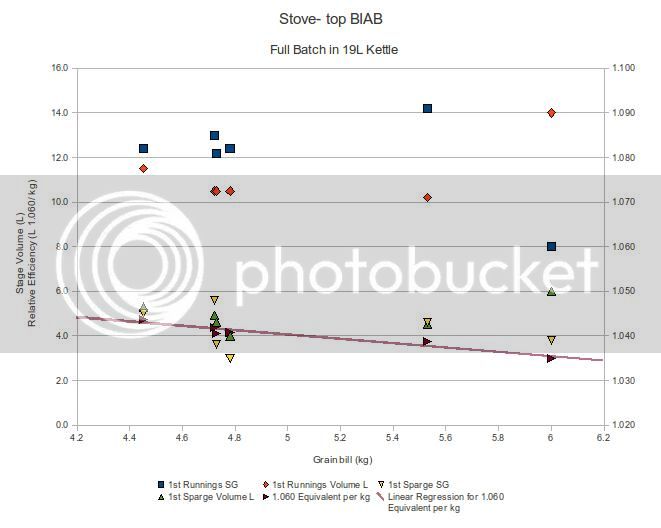Nice graphs. Even though the efficiency looks a tad on the low side, the correlation seems spot on. You could probably tweak it higher with a finer crush, proper mash PH, etc.
I've been researching this topic quite a bit recently, trying to get some hard answers about efficiency rates, and gravity limits of BIAB brewing.
If you've been brewing for a while, you certainly heard or read about "efficiency goes down" as the gravity goes up, or "my system loses efficiency on high gravity beers". But why is this??
From my research, it simply correlates to the ratio of sparge water to overall volume. As the grain bill increases, the mash water volume also increases, and thus the amount of water available for sparging is less.
For BIAB, it comes down to "what's the highest gravity we can get without sparging?" Assume there's no limitations imposed by the size of the kettle or the boil volume needed. (both are "hard" limitations that will affect gravity) In my, admittedly rudimentary experiments, it seems to be right around 1.080 or slightly above.
Edit. PS - I think kai refers to them as "first worts" so it mightbe easier to find looking for that.
I've taken a small amount of heated water (2 quarts - pretend they're liters ;-) ) and added varying amounts of grain, let sit for an hour, drain and measure OG. The highest reading was 1.082 no matter how much grain is added. Anyone else been able to get a higher reading?
Thoughts and comments appreciated!
Michael






